Peak Design Carbon Fiber Travel Tripod Review:
Deciding on which travel tripod fits you, and your travels best can be a difficult decision because there are tons of great ones on the market these days. With the release of the Peak Design Carbon Fiber Travel Tripod the decision has not been made any easier. The travel tripod by Peak Design is something that has definitely intrigued me for a while now because quite frankly, it’s pretty innovative. In some ways, one could argue it’s a new way of looking at how a tripod can be made. I had the opportunity to test it out, and here’s what I think of it.
Peak Design Carbon Fiber Travel Tripod Build Quality:
Let’s start off with the overall build, which is excellent. In fact, I feel like this is one of the best built tripods currently on the market. Everything feels so solid and sturdy. Weather and impact-resistant materials are used throughout. All the parts are not only serviceable, and cleanable but also replaceable. There is also an included padded case that is weather proof, and lastly, the tripod is guaranteed for life. As the name suggest, this is the carbon fiber version, which retails for $599.95 but you an also purchase the aluminum version for $349.95. If you need them, you can also get the Peak Design Spike Feet Set. Lastly, there is the Peak Design Ultralight Conversion Kit, which is said to reduce the carbon tripod’s weight down by 40% (1.71 lbs), and the aluminum version by 45%(1.88 lbs).
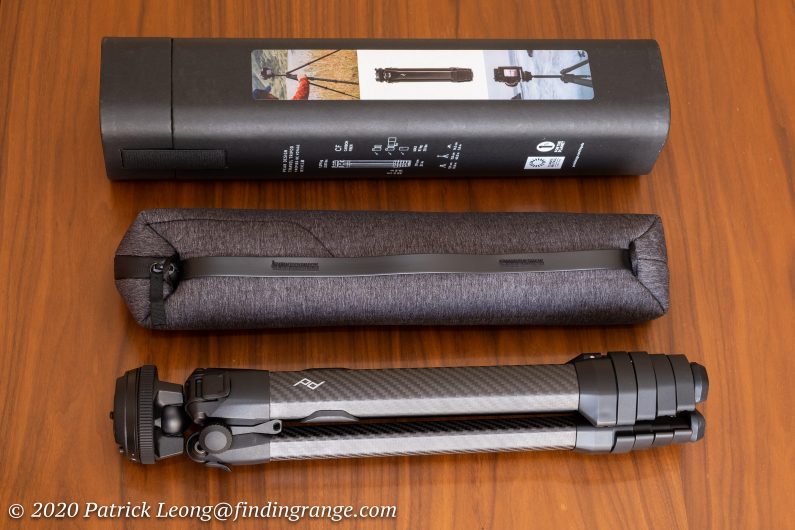
↑ This is what’s included with the Peak Design Carbon Fiber Travel Tripod.
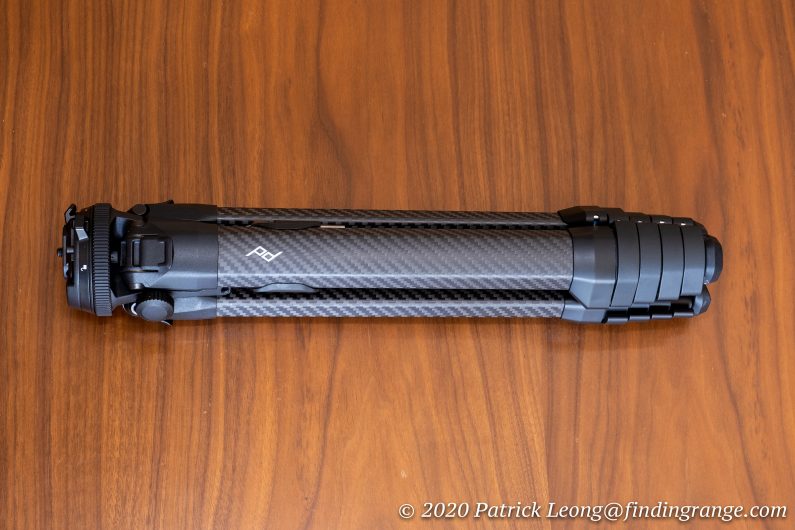
↑ The Peak Design Carbon Fiber Travel Tripod is very compact when folded up.
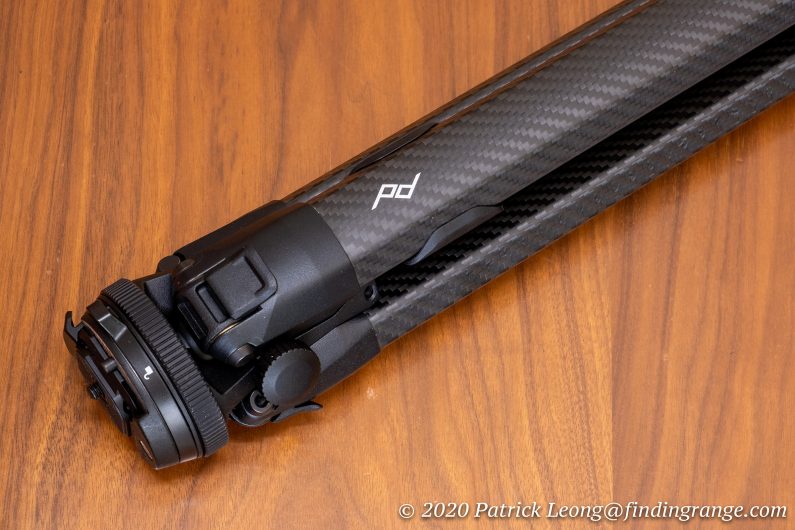
↑ Here’s a closer look at the tripod.
I said in the beginning that this tripod is pretty innovative, and here’s one reason why: the design of the legs are quite different. As many of you know, the average tripod has tubular legs whereas the Peak Design tripod has legs that have beveled edges. Why is this important, and why change the design that so many manufacturers including big names in the tripod industry like Gitzo have been doing for years? Well, when you fold them up, there aren’t any gaps like you would get from tubular legs, which in turn, helps reduce the thickness of the tripod. There aren’t even any protruding knobs either. In other words, the tripod’s aim is to eliminate wasted volume and in turn, make something that is more compact. It’s a fantastic design, plain and simple. This way of reducing overall size is particularly important in a travel tripod because the whole point of a travel tripod over a traditional one is to have something that is as compact as possible. In fact, when it’s folded, it’s roughly as thick as a water bottle.
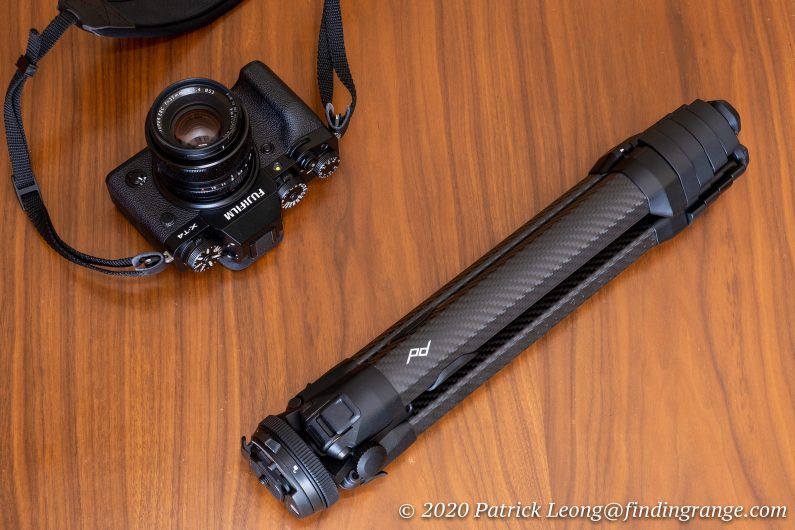
↑ Here’s a shot with the the Fuji X-T4 just so you can get a better picture of the overall size of the tripod.
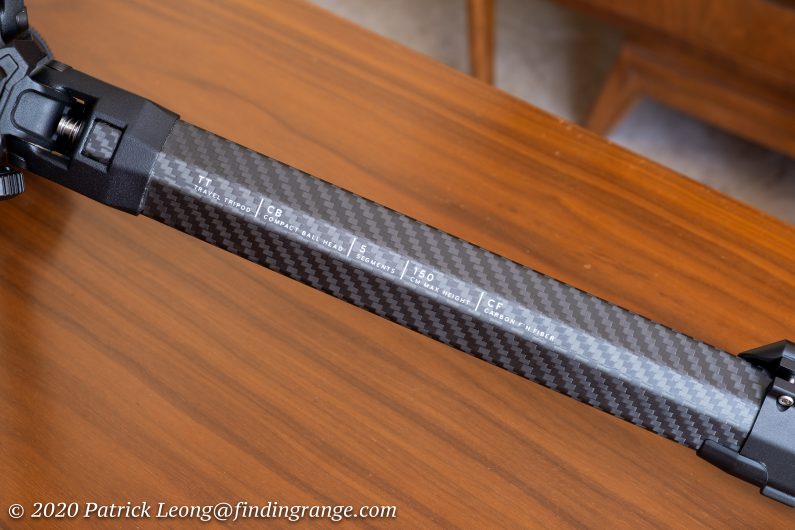
↑ As you can see, not your typical tubular leg. This is the inside part of the leg.
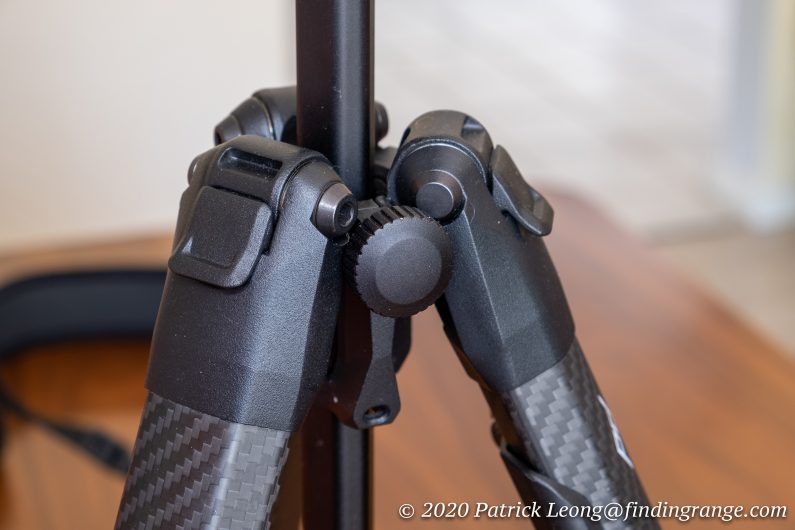
↑ Here’s a closer look at the tripod.
So, you end up with a tripod that is very compact considering its capabilities yet it still has the reach, and features that you want. When the tripod is completely folded up, it measures just 15.5″ in length with a weight of just 2.81 pounds. However, you can adjust the height of the Peak Design Carbon Fiber Travel Tripod from 5.5″ to 60″ with its 5 section legs. The tripod will also support up to 20 lbs or 9 kg, so it’s fine for DSLR users with telephoto lenses, and the legs are not reversible unlike many travel tripods out there, making it quicker to unfold. The legs lock into position with an aluminum clamp, so set up is quick and easy. It’s also worth mentioning that the center column is reversible, so capturing ground level shots, even inches off the ground, is a breeze.
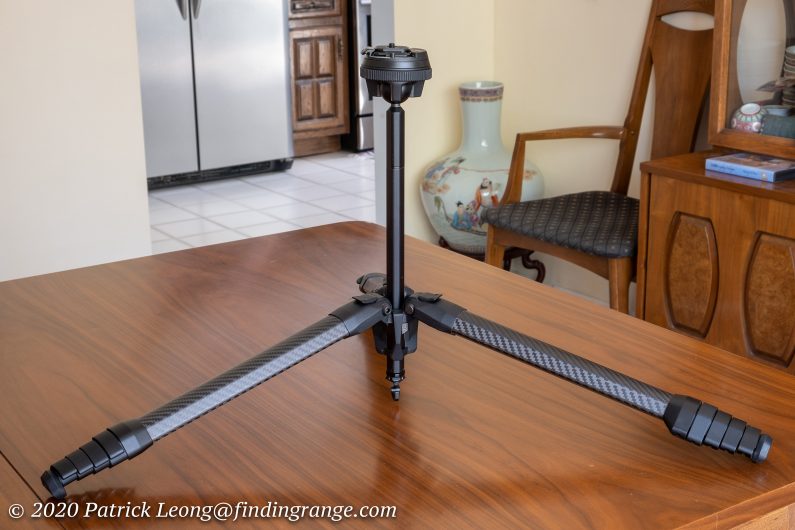
↑ The legs can achieve a wider stance if you prefer.
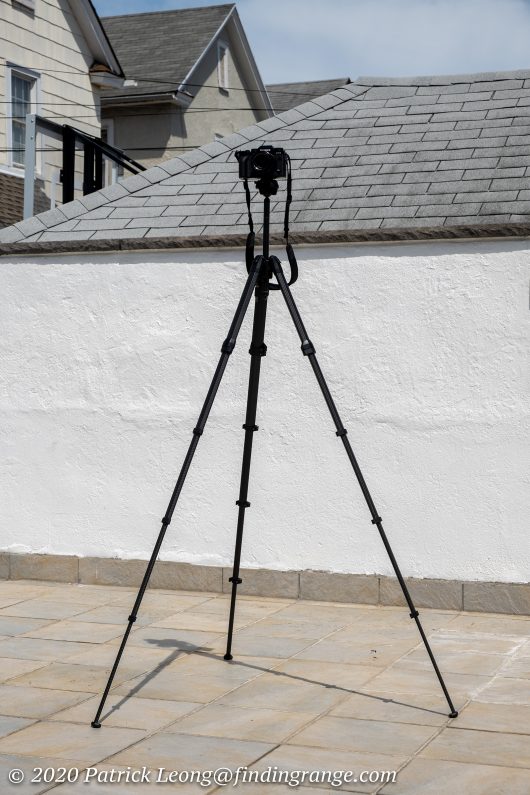
↑ Here’s the Peak Design Carbon Fiber Travel Tripod completely unfolded.
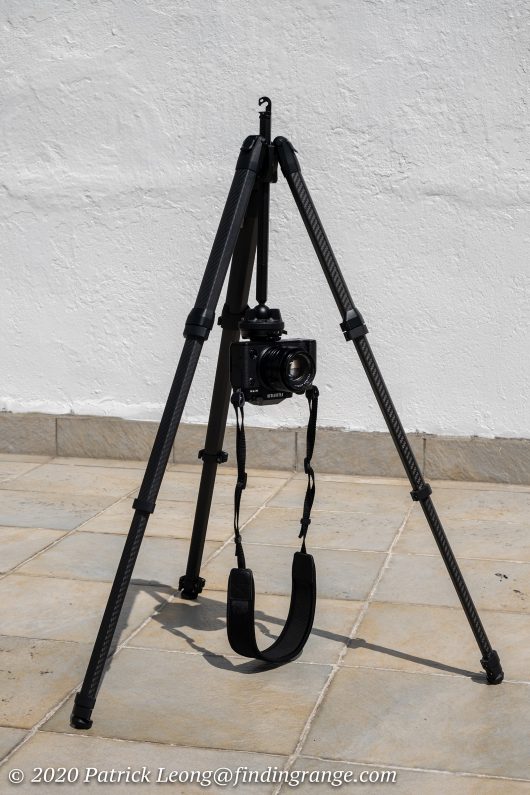
↑ The center column is reversible.

↑ Here’s a close up of the clamps.
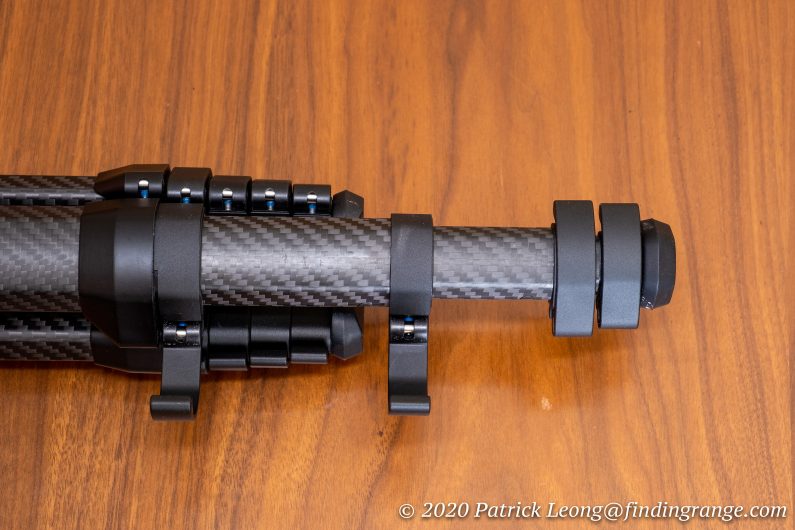
↑ Here’s another close up.
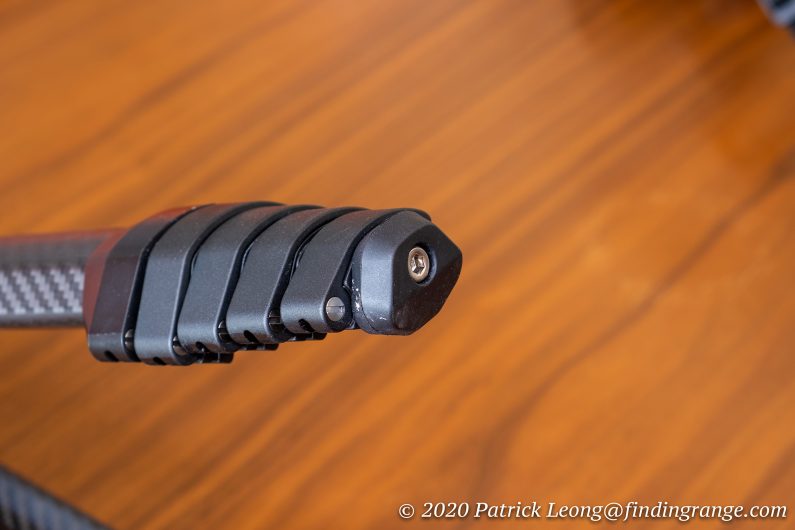
↑ The feet can be replaced with a spike set.
Speaking of the center column, the design is pretty cutting edge as well. At first sight, it looks a bit thin but don’t let that fool you because this center column is very rigid and strong. On the bottom of the center column, there is a detachable hook to add weight. It’s detachable because inside the center column, there s a mobile phone mount, which can be used to mount your phone to the ball head of the tripod. I think this is such a cool idea, and such a neat way of using all the available space.
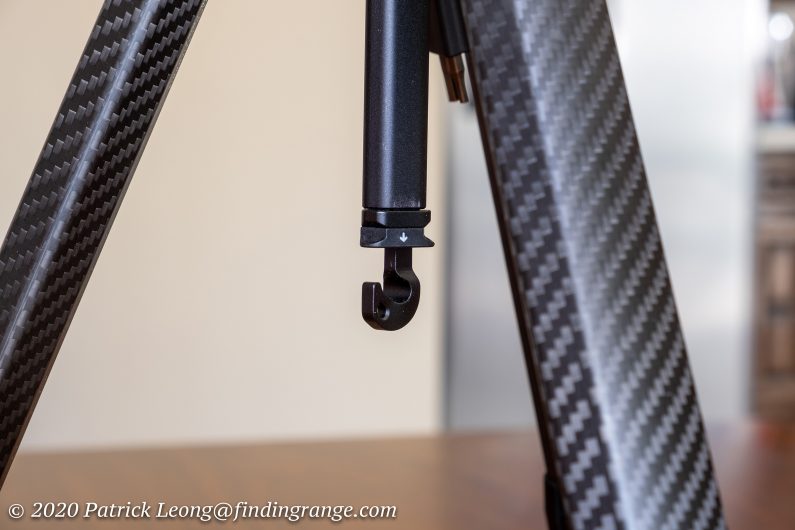
↑ The detachable hook attached to the center column.

↑ The hook unlocks.

↑ The hook slides off, so you can gain access to the phone mount.

↑ The phone mount slides out, and unfolds.
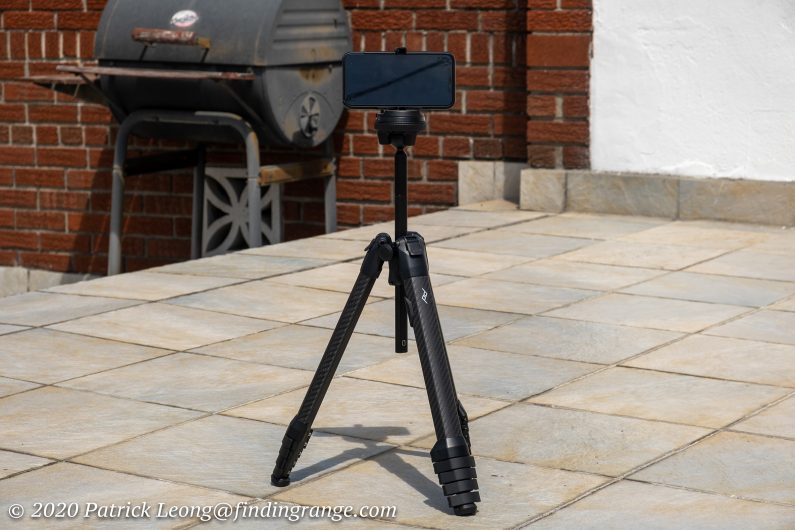
↑ Here’s a shot of my iPhone mounted on the Peak Design Carbon Fiber Tripod.
The ball head is an Arca Swiss style head. It’s brush aluminum on the top, and following the rest of the tripod’s design, is actually very low profile and compact. As I mentioned earlier, to keep the overall shape as thin as possible, there aren’t really any knobs on the Peak Design Carbon Fiber Travel Tripod. So, there’s only one single adjustment ring on the ball head. I think this is a good idea, and in general, I like to keep things simple myself but I will say that the single adjustment ring does take time getting used to. But like everything else in life, after the action is repeated enough, it becomes second nature. There is also a bubble level on the ball head.
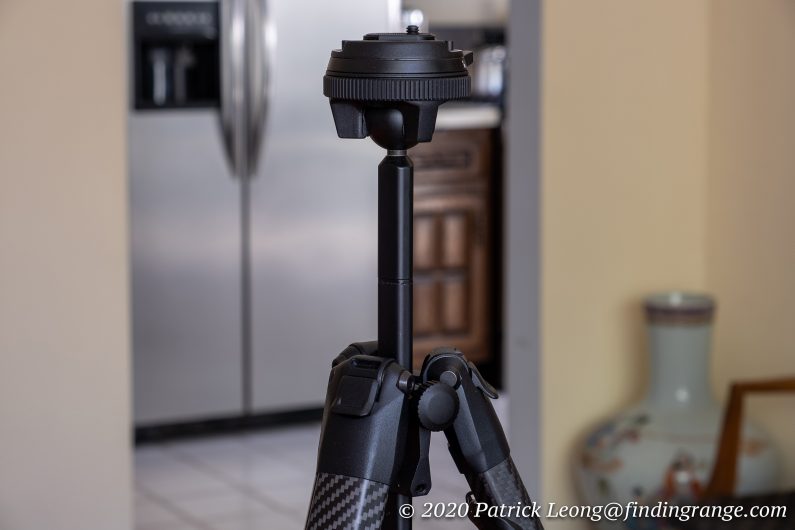
↑ Here’s a shot of the ball head.
There is a quick release plate included, and it’s also pretty slim. You need a hex key to tighten it onto your camera, which is what I prefer because from my own experience, I feel this method provides a more secure attachment to the camera, especially if you have a heavier system. The only issue is misplacing the key but there’s actually a place on one of the tripod’s legs where you can attach the key. According to Peak Design, the ball head is compatible with all PD plates, and most 3rd party Arca-type plates. Removable pins allow it to be used with most Arca-type L-brackets as well.
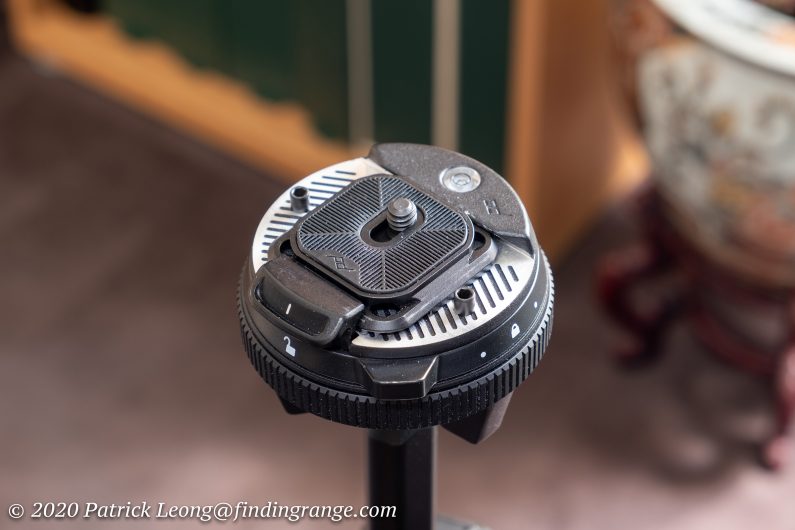
↑ Here’s a shot of the ball head, bubble level, and the quick release plate.
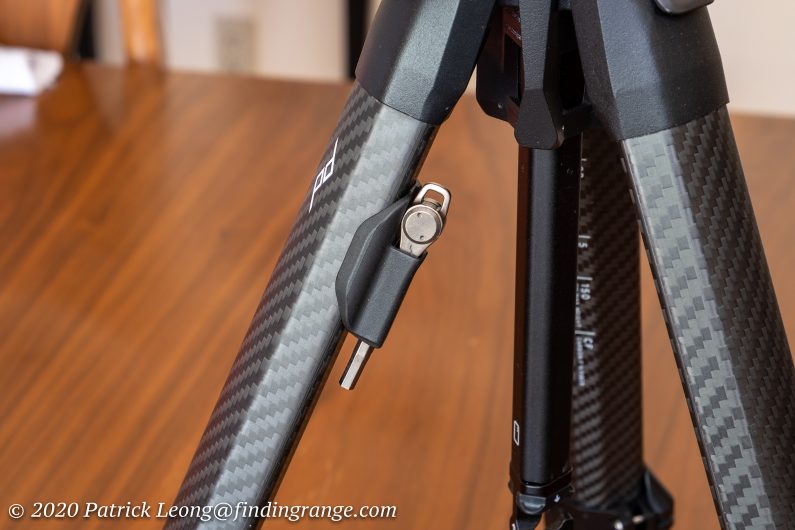
↑ This is where the hex key attaches to the leg.
Peak Design Carbon Fiber Travel Tripod in Use:
In use, I found the Peak Design Carbon Fiber Travel Tripod to be excellent. The tripod is so compact and light. The legs and the thin center column, may not look like they’ll be up to the task of supporting your precious gear but it’s quite the opposite: this is one of the sturdiest, and most solid tripods in its category that I’ve used in quite some time. Like I said before, this tripod is designed to hold up 20 Ib, and I have absolutely no doubt in my mind that it will.
There are sometimes compromises that you do make when you choose a travel tripod over a regular one. For instance, maybe 60 inches isn’t as high as everyone would want. However, at least in terms of rigidity, I don’t feel like any have really been made. The Peak Design Carbon Fiber Travel Tripod has been designed so well; it just feels so rigid overall and well made. I extended it to the max just to test it out, and there’s absolutely no wobbling or flexing.
I also just love how little room this tripod takes up in a bag or another form of luggage yet there are such cool innovative features. I love how there’s a phone mount hidden in the center column. Not only is this a great idea, it just maximizes the use of all the space. I love that you can clip on the hex key onto one of the legs, so you don’t have to carry it somewhere else, and maybe lose it in the process. I love how downright space age this tripod looks as well. It’s such a cool design overall. I’m a Gitzo fan; I am currently using a the GT2542 (you can read my review here). It’s not a travel tripod, so I am definitely in the market for one. This one by Peak Design might just be my next one.
Peak Design Carbon Fiber Travel Tripod Verdict:
Overall, I love the design of the Peak Design Carbon Fiber Travel Tripod, and found it to be one of the best travel tripods I’ve used so far. The design is fantastic; instead of just creating any old travel tripod, Peak Design produced a well-thought out one with innovative ideas that is also very compact, and easy to live with.
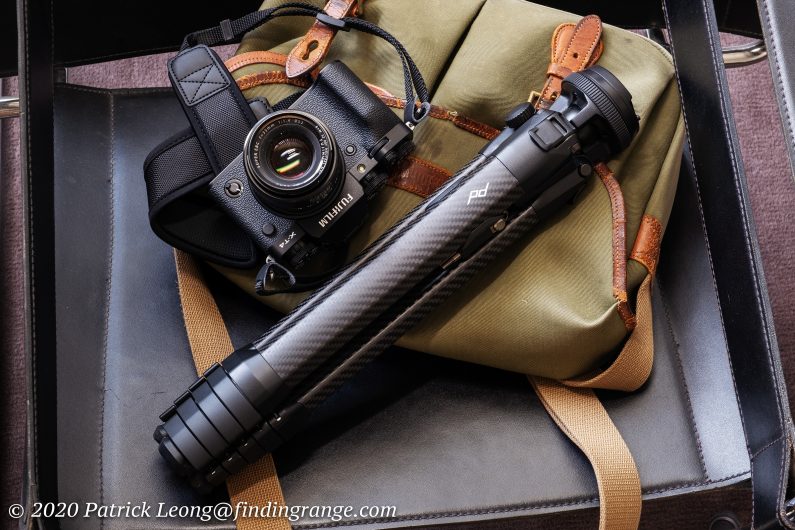
↑ One last shot of the Fuji X-T4 with the Peak Design Carbon Fiber Tripod.
While $599.95 isn’t cheap, I don’t think it’s overpriced for this tripod. First, it’s carbon fiber, and that material isn’t cheap. Also, this is a travel tripod with cutting edge design that is not only extremely well made and rigid, it is also one of the most compact considering it’s features, and size when it is unfolded. I can not emphasize enough on how much space you really do save with a tripod like this one. You really will notice the difference when you’re packing it in luggage or your backpack. It’s also light, making it easy to hike with or spend a full day shooting.
So, I definitely recommend the Peak Design Carbon Fiber Travel Tripod. I just think it is so different than anything else currently out, and not different just for the sake of being different. The innovative designs really work here, and are worth every bit of the asking price.
Thanks for taking the time to read my review! If you’re considering purchasing the Peak Design Carbon Fiber Travel Tripod, and my review helped you decide, please help support this site by purchasing from the links below or any mentioned in this review. It will not cost you anything extra. Thank you for your support!

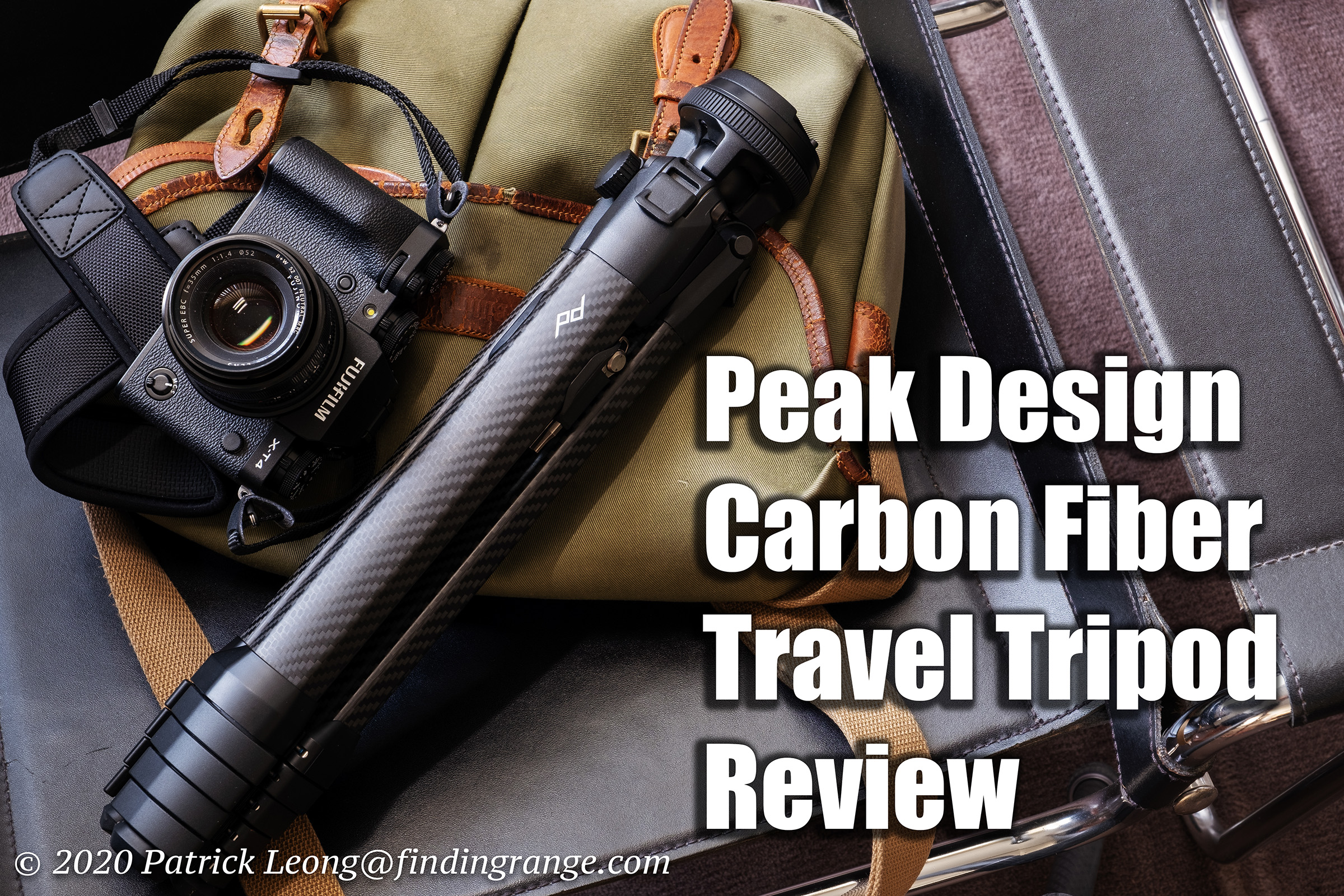
Hey, Patrick, thanks for the well-written review. I bought the carbon version of this tripod over the summer, and I agree with you that it’s very solid feeling, and conveys a real sense of quality and thoughtful design. It makes my carbon fiber Gitzo traveler feel quite antiquated. And the details like a place to store the hex wrench, and the hidden phone mount has come in handy already. I also like how quickly I can set it up or break it down, especially compared to the twist-lock collars on the legs of my Gitzo.
There is one area where I was less than thrilled: the clamping force of the ball head was not as strong as I expected. I went out early one morning to take photos in the Thousand Lakes area of NY state, with my SL2 and the Sigma 100-44 lens. This is a long lens, but it’s quite light for its size, and my Siriu ball head with a similar size ball to the Peak tripod had no problem supporting it. But on the Peak, no matter how hard I cranked down on the clamping ring, the camera would steadily tilt downwards with the weight of the extended zoom lens. Probably my fault for not having a tripod collar for that lens, but as I said, my $100 Siriu ball head supported it fine, so I assumed the Peak would as well.
I have since tested the Peak with this camera and lens setup *with* a tripod collar, so that center of gravity is better balanced, and I’m happy to say it was rock solid. That’s my only real gripe with this tripod, and overall I’m happy I bought it, and I would buy it again.
Hi David!
Good to hear from you, and thanks for taking the time to read my review!
I think Peak Design really has something good here, and in some ways, really changed the game in terms of tripod manufacturing. I absolutely loved it while I had it here to review. I was sorry I had to send it back. Right now, I’m currently using a Gitzo GT2542 but if I was in the market for a travel tripod, I think this would be it.
Sorry to hear about your issue with the SL2 and the Sigma but good to hear it works with the tripod collar. I bet those pics around the Thousand Lakes came out awesome :). I have not been around there yet but I have plans to one of these days. I hope the tripod continues to give you years and years of good service. Thanks for sharing your experience, and stay in touch! Stay safe out there!
Best,
Patrick
Thanks for the review. I’m not sure I’m 100% sold with all this positive hype which seems to appear across the web.
My partner has the alu version and there are a few things which are putting me off buying the carbon version:
– to shorten the pole and get the tripod low to the ground you need to use the tools to fully remove the ball head. Poor design imo.
– the wrench on the side falls off. Nearly lost it in a stream. So I wouldn’t keep it on the side without a good chance of losing it.
– to be able to adjust the ball head you have to raise the centre column. Therefore impacting on the rigidity of the whole set up. Again, do a lot of Waterfall photography and vibration damping.
– the rotating aluminium dial on the ball head which you use to fasten and lose it is loose and wobbles. Doesn’t impact operation but feels flimsy or poorly built.
– the lever locks are good, but if your doing outdoors photography (steams, rivers, sand, etc.) then grit and dirt get in. Have to use the tool to take legs apart to clean which is harder to do than screw threads.
– small ridge on the centre column where you can split this as mentioned above to make it shorter. This hooks on the adjustment know and catches whenever you raise and lower the column if you haven’t fully released the knob.
It’s a sturdy and very compact tripod, but I’d really like if people would call out the niggles or negative aspects as well rather than only the perceived “perfectness” of it. Personally, I may wait for v2 or find something a little more versatile.
Hi Andy,
Thanks for taking the time to read my review! Apologies for the late reply! Been so busy lately.
I definitely appreciate you sharing your opinions and info here. It’s not perfect but for my needs, I found it to be a pretty great tripod for what it is, of course (whatever limitations like compactness, lightness, travel, etc.). Take care, and thanks for stopping by!
Best,
Patrick